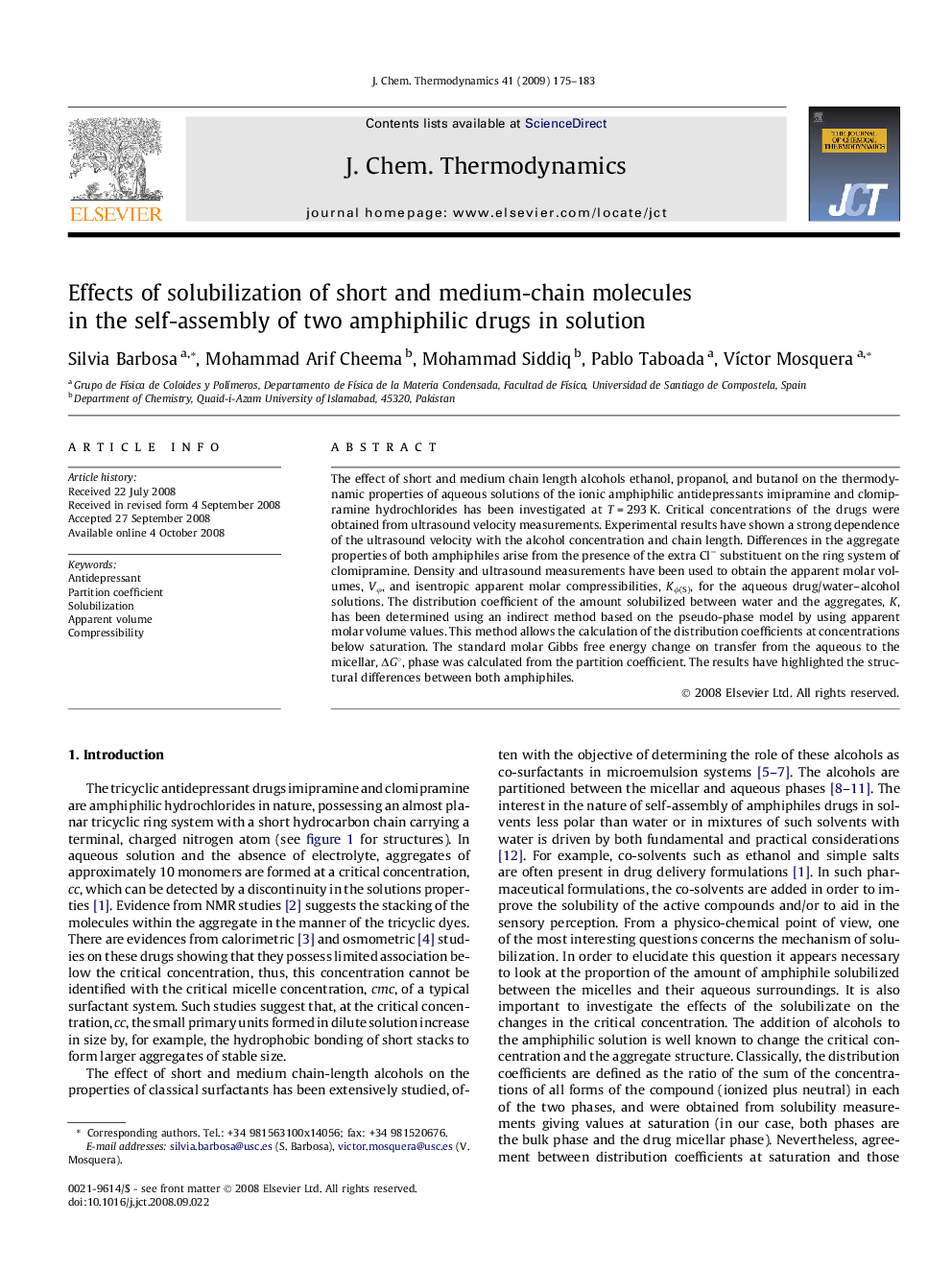| Article ID | Journal | Published Year | Pages | File Type |
|---|---|---|---|---|
| 216653 | The Journal of Chemical Thermodynamics | 2009 | 9 Pages |
The effect of short and medium chain length alcohols ethanol, propanol, and butanol on the thermodynamic properties of aqueous solutions of the ionic amphiphilic antidepressants imipramine and clomipramine hydrochlorides has been investigated at T = 293 K. Critical concentrations of the drugs were obtained from ultrasound velocity measurements. Experimental results have shown a strong dependence of the ultrasound velocity with the alcohol concentration and chain length. Differences in the aggregate properties of both amphiphiles arise from the presence of the extra Cl− substituent on the ring system of clomipramine. Density and ultrasound measurements have been used to obtain the apparent molar volumes, Vφ, and isentropic apparent molar compressibilities, Kϕ(S), for the aqueous drug/water–alcohol solutions. The distribution coefficient of the amount solubilized between water and the aggregates, K , has been determined using an indirect method based on the pseudo-phase model by using apparent molar volume values. This method allows the calculation of the distribution coefficients at concentrations below saturation. The standard molar Gibbs free energy change on transfer from the aqueous to the micellar, ΔG∘ΔG∘, phase was calculated from the partition coefficient. The results have highlighted the structural differences between both amphiphiles.
